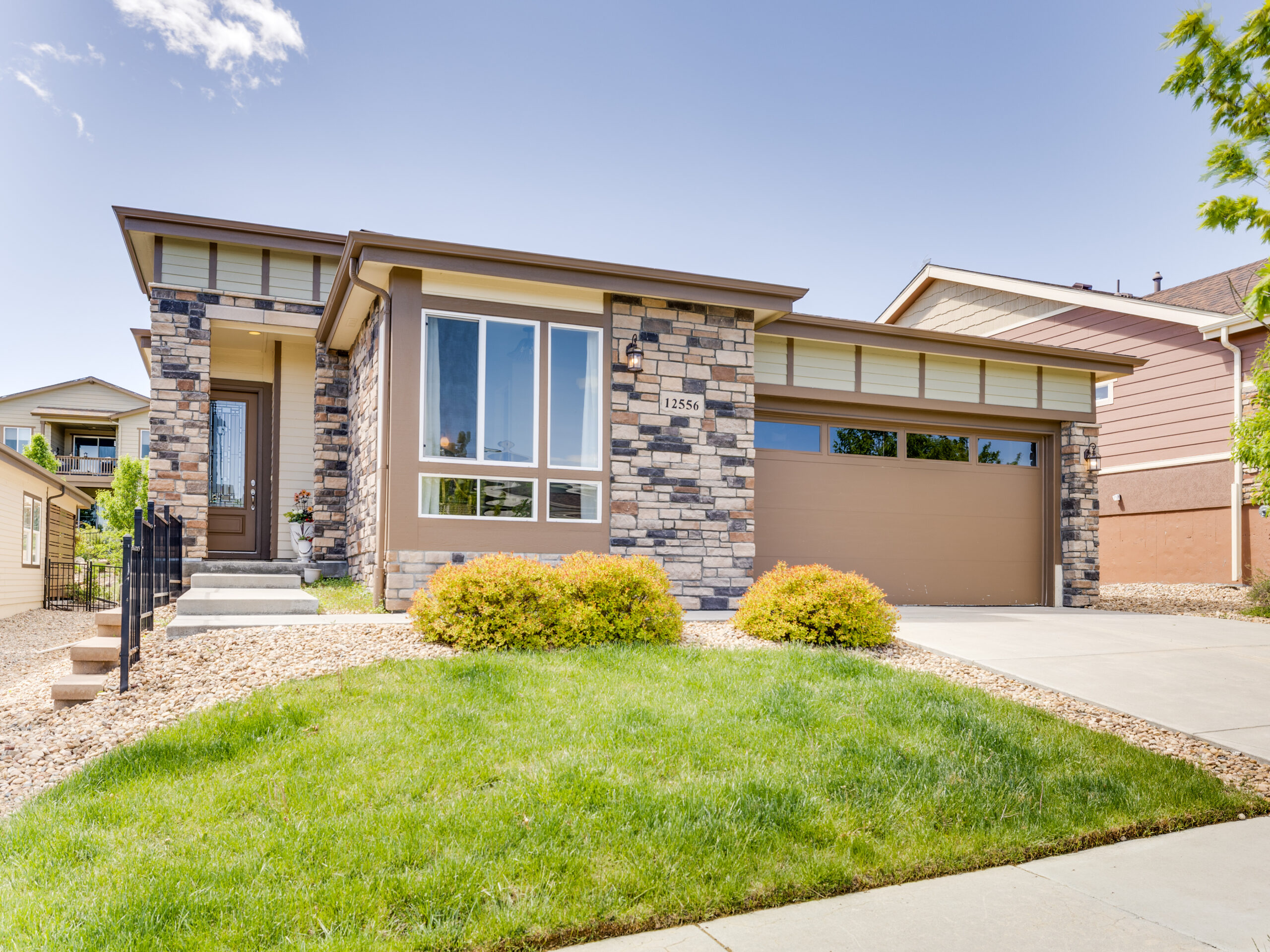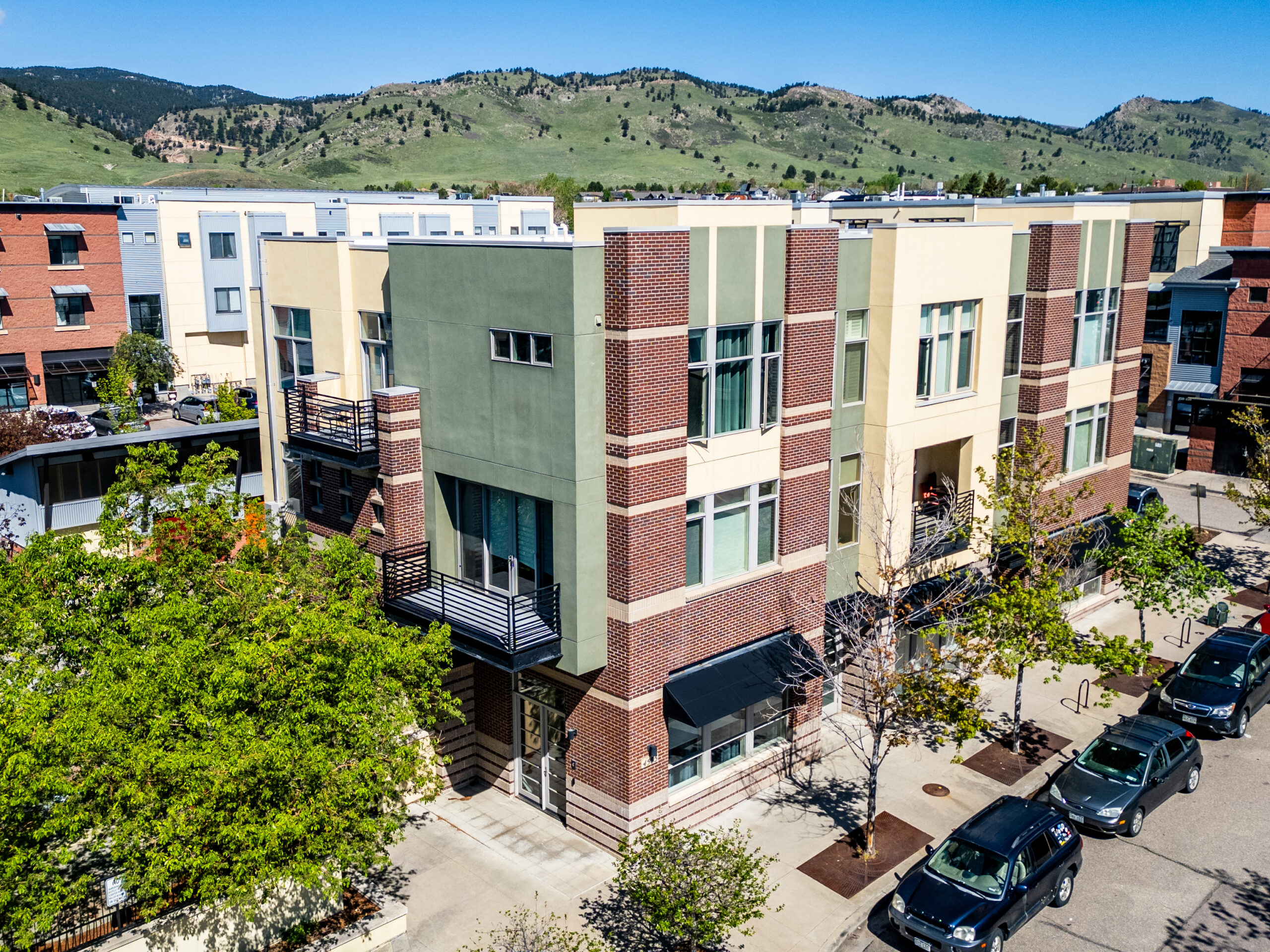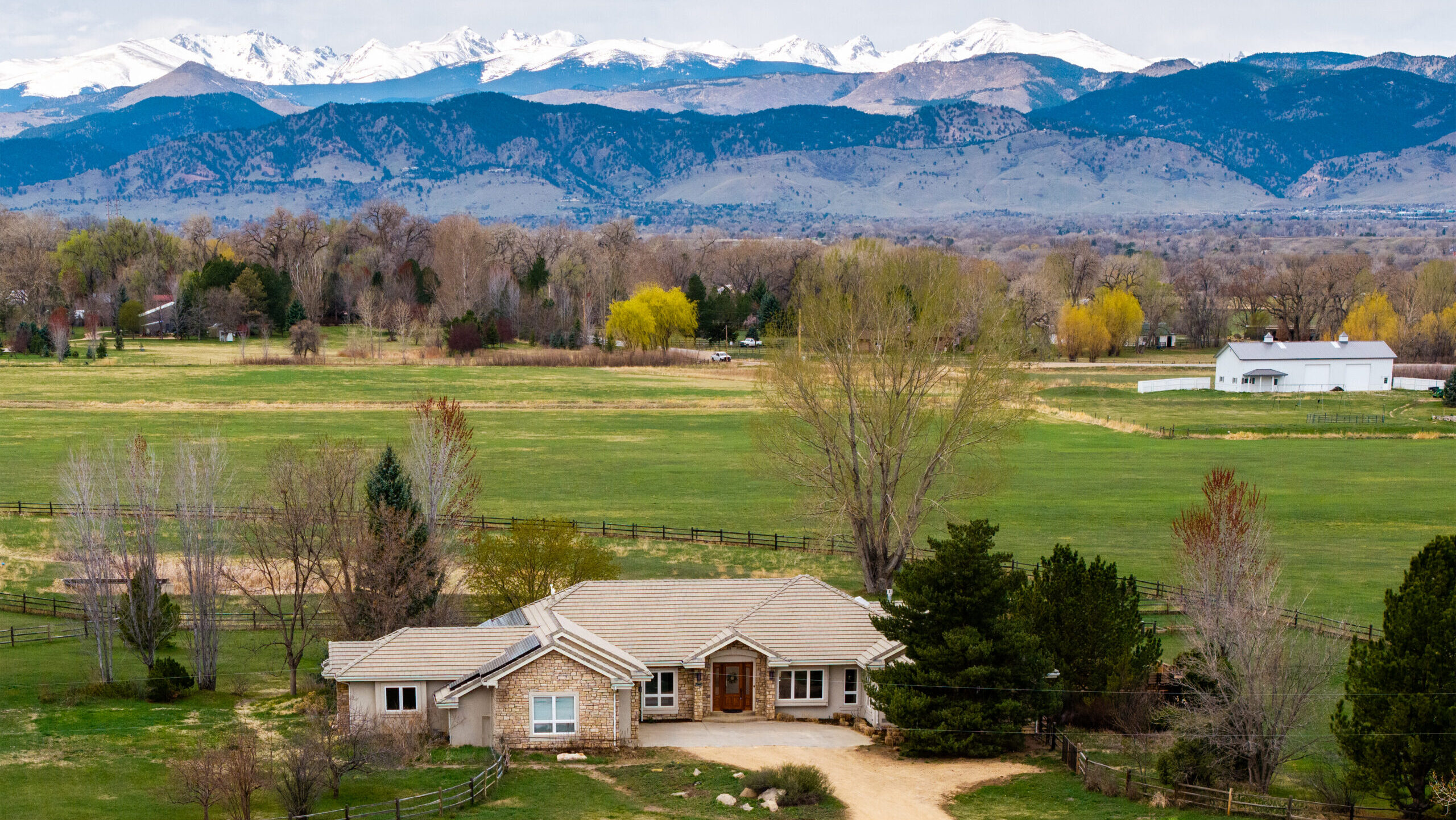The Impact of NEW House Size Limits
by Osman Parvez
—-
An Economic Impact Report on the effect of house size limits was made public on February 24th.
An important issue for many when considering massing and scale standards is whether they support or detract from property values. A short answer is that it depends on what characteristics confer value. There is an ingrained assumption that limiting size also limits potential profit. It is true that limiting size may limit unit sale value, but this is not the same as limiting profit. Depending on the neighborhood and the reason for purchasing a unit in a given neighborhood, building larger units may or may not confer more profit.
The primary concern for residents in Boulder is impact new, more restrictive house size limits will have on property values, not the profit a developer makes from turning smaller houses into bigger houses. From the 1st paragraph, the report is starting off on the wrong question.
The results indicate that in a few neighborhoods, restricting size might restrict profit in an upwardly bound market, but that in most neighborhoods, creating units near the current size limit increases cost such that little profit is gained despite a much higher sales price.
In other words, this generic study says that developers have little profit incentive to build houses to current maximum size limits (not new proposed limits).
In some areas of Boulder, building age increases value, while in others, new construction adds value. Larger lot size adds to value in some areas and adds little difference in others. Average building value per square foot varies by area. In each of the areas examined, these factors vary and add differing amounts to the total value of land and buildings. Land values change as building types change so a differential for land value for each area was formulated based on building value to calculate change in land value resulting from the interaction of land value and building value (in all areas, as building value rises land value also rises by some amount).
To evaluate the impact of new standards, we combined the results of our analysis with current construction pricing to see whether the neighborhoods had differences in profit available by adding to unit size. Using typical existing unit sizes, the net profit of an addition to bring the unit up to the FAR proposed in Option 1 was calculated. We then calculated the net profit of adding on to an existing building to achieve a floor area ratio of 0.7 for each lot size. To test for different lot sizes, we used a variety of sizes from small to very large. The results are shown in the tables below.
This analysis is based upon the idea that the potential profit available from increasing unit size is part of the profit to existing owners when they sell (that is, that zoning regulation is capitalized into lot value. Thus a net profit of zero or greater indicates that redevelopment is feasible for a given lot size and floor area ratio. The results indicate that building the largest house does not necessarily confer the best net profit for the existing owner. Reducing the unit size lowers the total unit value, but increases the net change to the owner in most areas. In other words, a current property owner is likely to make more money with a smaller addition than with a larger one in most areas of Boulder.

The impact of the proposed Option 1 FAR limits should not have an adverse impact on any of the areas evaluated. In all areas except for Crossroads and East Boulder, where no scenarios for redevelopment as modeled showed a profit, the proposed FAR regulations appear to be at a threshold where adding to unit size is feasible, and in addition appear to add to potential profit in most areas.
Another interesting aspect of the comparison is that adding dramatically to unit size does not change the net profit significantly in Central and North Boulder. In most areas, as lot size grows, building to a maximum FAR appears to be uneconomic.
This raises the question of why people are buying units and building the maximum possible. The above table indicates that this is economically feasible only in Central and North Boulder. Where it is less feasible, the question of whether buying decisions are based upon non-economic factors becomes important (i.e. are people willing to spend more than the property is worth to be in the neighborhood). Part of the price inflation of the past eight years has been due to favorable interest rates and an unfounded sense of confidence in markets that has been recently dashed. The pressure to get as much house as possible in the best neighborhood possible, with construction fueled by relatively low transaction costs and appraisal standards that posit an upward price spiral, rather than realistic economic considerations of profit available, may abate in the current economy and financing environment.
At the moment financing and sales trends militate against a continuation of pop and scrape development. Recent sales trends show a decline in sales (a 48 percent year over year decline in Boulder from November, 2007 to November, 2008). This low level of sales is likely to continue until pricing reaches a level consonant with national economic trends and the financial sector of the economy recovers. House pricing is traditionally known as “sticky,” meaning that most people will hold a unit in a down market until prices improve. With fewer people willing to sell and with lenders exercising tighter standards out of aversion to risk, construction is likely to slow or halt.
A well-known study of jurisdictions with zoning controls argues that such controls maintain higher prices of units in comparison with areas that do not have such controls.2 While some may argue with the meaning of that conclusion, if true it means that Boulder, by maintaining controls over the character of what is built, will maintain value for its present homeowners. This would seem to indicate against a drop in value from regulation.
At the same time, standards for massing and scale do not appear to harm the ability to profit from improving existing units. Standards can also serve to maintain neighborhood character and some measure of affordability for middle-income residents by damping down financially unrealistic development in some areas. In addition, in areas where land costs are low, there is a possibility of maintaining a measure of affordability through regulation that maintains existing neighborhood character. Boulder can expect to hold value better than many cities because of its convenient location between a major metropolitan market and the magnificent surrounding countryside, but it will also hold value because of its sense of community and actions to preserve its character.
In one paragraph, the study says regulations won’t dampen appreciation. In another, it says it will and thereby keep the neighborhood more affordable. Which on is it? And how do the residents (owners) of houses in that neighborhood feel about regulations that will keep their neighborhood “affordable” by (further) restricting improvements? Would they have bought the house if they thought they couldn’t improve it? Would they have kept owning it, saving for the day they can pop the top and expand?
—-
Want to get blog updates via email? Click HERE.
Ready to buy or sell? Schedule an appointment or call 303.746.6896.
You can also like our Facebook page or follow us on Twitter.
As always, your referrals are deeply appreciated.
—
The ideas and strategies described in this blog are the opinion of the writer and subject to business, economic, and competitive uncertainties. We strongly recommend conducting rigorous due diligence and obtaining professional advice before buying or selling real estate.
The Impact of NEW House Size Limits
by Osman Parvez
—-
An Economic Impact Report on the effect of house size limits was made public on February 24th.
An important issue for many when considering massing and scale standards is whether they support or detract from property values. A short answer is that it depends on what characteristics confer value. There is an ingrained assumption that limiting size also limits potential profit. It is true that limiting size may limit unit sale value, but this is not the same as limiting profit. Depending on the neighborhood and the reason for purchasing a unit in a given neighborhood, building larger units may or may not confer more profit.
The primary concern for residents in Boulder is impact new, more restrictive house size limits will have on property values, not the profit a developer makes from turning smaller houses into bigger houses. From the 1st paragraph, the report is starting off on the wrong question.
The results indicate that in a few neighborhoods, restricting size might restrict profit in an upwardly bound market, but that in most neighborhoods, creating units near the current size limit increases cost such that little profit is gained despite a much higher sales price.
In other words, this generic study says that developers have little profit incentive to build houses to current maximum size limits (not new proposed limits).
In some areas of Boulder, building age increases value, while in others, new construction adds value. Larger lot size adds to value in some areas and adds little difference in others. Average building value per square foot varies by area. In each of the areas examined, these factors vary and add differing amounts to the total value of land and buildings. Land values change as building types change so a differential for land value for each area was formulated based on building value to calculate change in land value resulting from the interaction of land value and building value (in all areas, as building value rises land value also rises by some amount).
To evaluate the impact of new standards, we combined the results of our analysis with current construction pricing to see whether the neighborhoods had differences in profit available by adding to unit size. Using typical existing unit sizes, the net profit of an addition to bring the unit up to the FAR proposed in Option 1 was calculated. We then calculated the net profit of adding on to an existing building to achieve a floor area ratio of 0.7 for each lot size. To test for different lot sizes, we used a variety of sizes from small to very large. The results are shown in the tables below.
This analysis is based upon the idea that the potential profit available from increasing unit size is part of the profit to existing owners when they sell (that is, that zoning regulation is capitalized into lot value. Thus a net profit of zero or greater indicates that redevelopment is feasible for a given lot size and floor area ratio. The results indicate that building the largest house does not necessarily confer the best net profit for the existing owner. Reducing the unit size lowers the total unit value, but increases the net change to the owner in most areas. In other words, a current property owner is likely to make more money with a smaller addition than with a larger one in most areas of Boulder.

The impact of the proposed Option 1 FAR limits should not have an adverse impact on any of the areas evaluated. In all areas except for Crossroads and East Boulder, where no scenarios for redevelopment as modeled showed a profit, the proposed FAR regulations appear to be at a threshold where adding to unit size is feasible, and in addition appear to add to potential profit in most areas.
Another interesting aspect of the comparison is that adding dramatically to unit size does not change the net profit significantly in Central and North Boulder. In most areas, as lot size grows, building to a maximum FAR appears to be uneconomic.
This raises the question of why people are buying units and building the maximum possible. The above table indicates that this is economically feasible only in Central and North Boulder. Where it is less feasible, the question of whether buying decisions are based upon non-economic factors becomes important (i.e. are people willing to spend more than the property is worth to be in the neighborhood). Part of the price inflation of the past eight years has been due to favorable interest rates and an unfounded sense of confidence in markets that has been recently dashed. The pressure to get as much house as possible in the best neighborhood possible, with construction fueled by relatively low transaction costs and appraisal standards that posit an upward price spiral, rather than realistic economic considerations of profit available, may abate in the current economy and financing environment.
At the moment financing and sales trends militate against a continuation of pop and scrape development. Recent sales trends show a decline in sales (a 48 percent year over year decline in Boulder from November, 2007 to November, 2008). This low level of sales is likely to continue until pricing reaches a level consonant with national economic trends and the financial sector of the economy recovers. House pricing is traditionally known as “sticky,” meaning that most people will hold a unit in a down market until prices improve. With fewer people willing to sell and with lenders exercising tighter standards out of aversion to risk, construction is likely to slow or halt.
A well-known study of jurisdictions with zoning controls argues that such controls maintain higher prices of units in comparison with areas that do not have such controls.2 While some may argue with the meaning of that conclusion, if true it means that Boulder, by maintaining controls over the character of what is built, will maintain value for its present homeowners. This would seem to indicate against a drop in value from regulation.
At the same time, standards for massing and scale do not appear to harm the ability to profit from improving existing units. Standards can also serve to maintain neighborhood character and some measure of affordability for middle-income residents by damping down financially unrealistic development in some areas. In addition, in areas where land costs are low, there is a possibility of maintaining a measure of affordability through regulation that maintains existing neighborhood character. Boulder can expect to hold value better than many cities because of its convenient location between a major metropolitan market and the magnificent surrounding countryside, but it will also hold value because of its sense of community and actions to preserve its character.
In one paragraph, the study says regulations won’t dampen appreciation. In another, it says it will and thereby keep the neighborhood more affordable. Which on is it? And how do the residents (owners) of houses in that neighborhood feel about regulations that will keep their neighborhood “affordable” by (further) restricting improvements? Would they have bought the house if they thought they couldn’t improve it? Would they have kept owning it, saving for the day they can pop the top and expand?
—-
Want to get blog updates via email? Click HERE.
Ready to buy or sell? Schedule an appointment or call 303.746.6896.
You can also like our Facebook page or follow us on Twitter.
As always, your referrals are deeply appreciated.
—
The ideas and strategies described in this blog are the opinion of the writer and subject to business, economic, and competitive uncertainties. We strongly recommend conducting rigorous due diligence and obtaining professional advice before buying or selling real estate.
Share This Listing!
More about the author
Osman Parvez
Owner & Broker at House Einstein as well as primary author of the House Einstein blog with over 1,200 published articles about Boulder real estate. His work has appeared in the Wall Street Journal and Daily Camera.
Osman is the primary author of the House Einstein blog with over 1,200 published articles about Boulder real estate. His work has also appeared in many other blogs about Boulder as well as mainstream newspapers, including the Wall Street Journal and Daily Camera. Learn more about Osman.
Work with
House Einstein
Thinking about buying or selling and want professional advice?
Call us at 303.746.6896
Your referrals are deeply appreciated.













